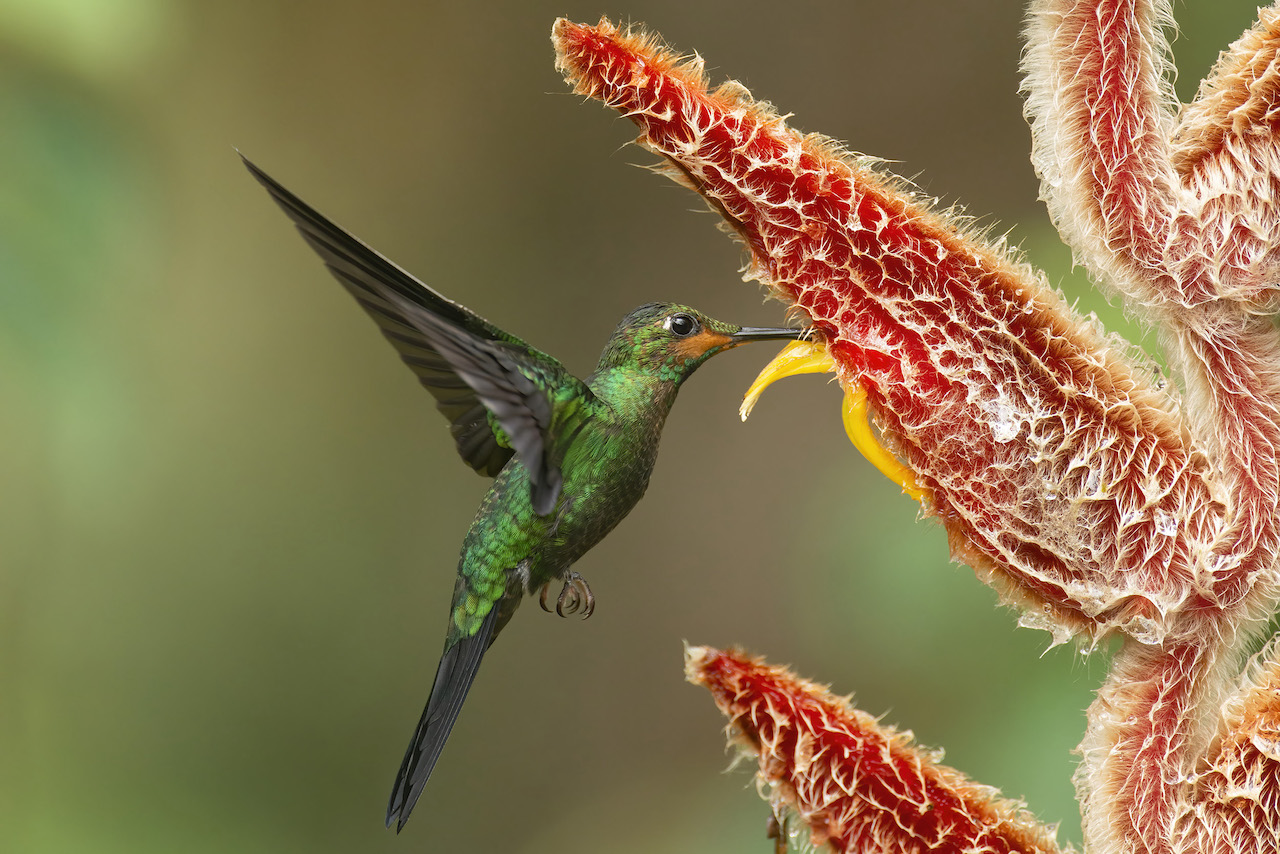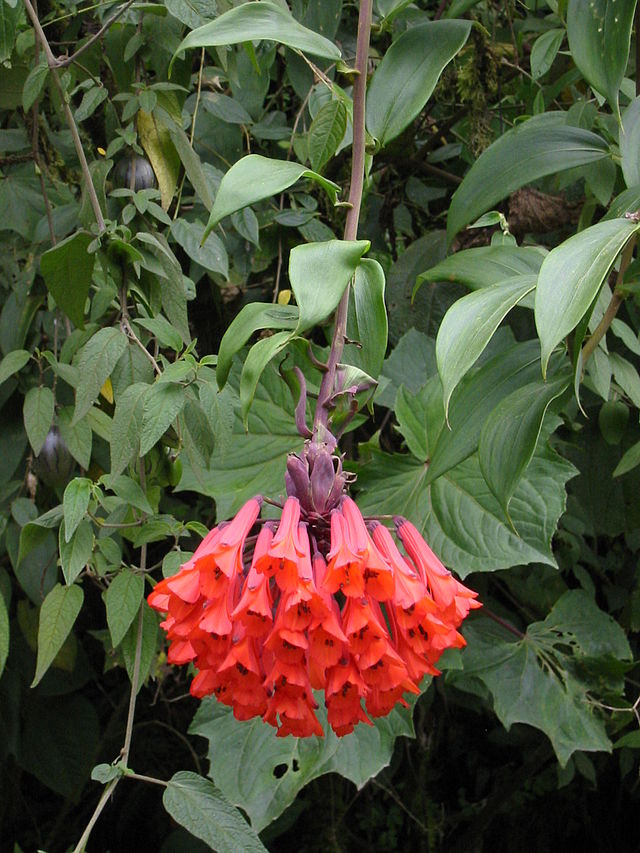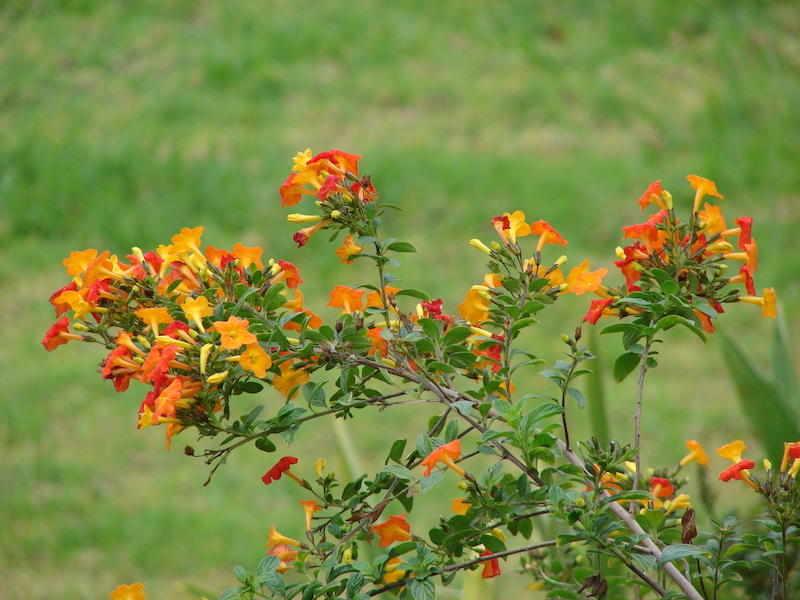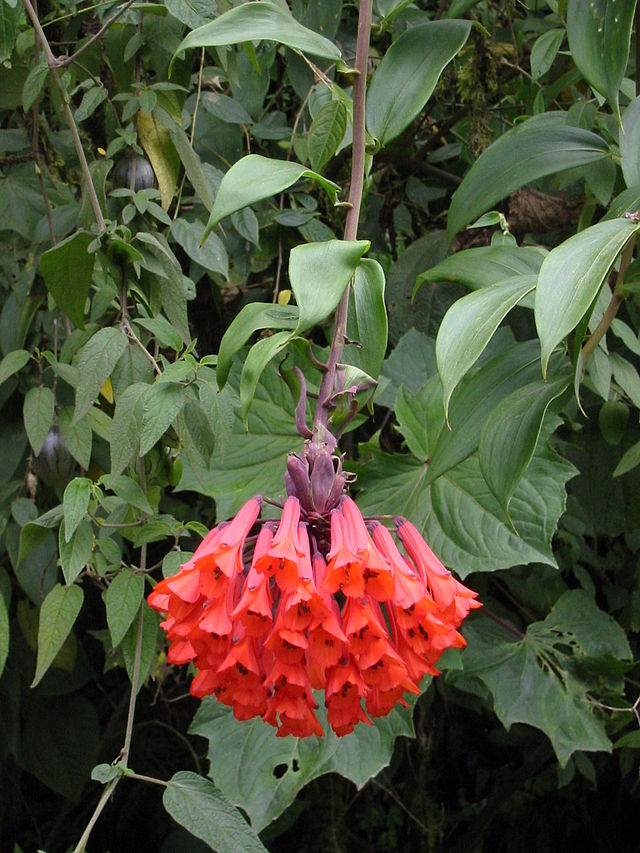Plant to attract Hummingbirds

Hummingbirds play a vital role in flower pollination, which requires understanding their diet. These birds feed mainly on flower nectar and are significant pollinators. They need to eat every 10 minutes, consuming about 2/3 of their body weight in food per day. Going without food for just two hours can result in death due to starvation. As flower nectar is hummingbirds’ primary sugar source, they take full advantage of abundant flowering seasons to stock up on this essential energy source. However, this nectar lacks essential nutrients such as proteins, vitamins, and minerals, so hummingbirds also hunt small insects to supplement their diet. Like bees who selectively collect nectar based on its sugar concentration, hummingbirds prefer nectar with a sugar concentration of around 25%. They will not drink nectar with less than 15% sugar concentration. This nectar consumption is crucial for certain flowering species as it is essential to pollination.
The flowers that birds pollinate are colorful, often red or orange, as well as yellow, white, blue, or purple, which indicates visual attraction. They have a tubular corolla, which prevents many other pollinators from harvesting the nectar. They do not have a scent since the olfactory capacity of hummingbirds is poor, and this prevents the flower from being located by insects that use the smell to orient themselves.
The stigma and stamens have an orientation that ensures contact with the pollinator. Hummingbirds do not pollinate flowers on purpose; it is more of an accident resulting from coevolution, as I mentioned at the beginning. They use their long tongue to suck nectar from flowers through the spiral structure on the outside of the tongue. The hummingbird has to stick its long, sharp beak into the center of the flower to reach the nectar while its beak is getting it, or the front of its head is covered with pollen. When the hummingbird has extracted its nectar, it will fly away, but in 10 minutes, it will need to feed again, which means that it will be inserting its beak into another flower in a short time. The hummingbird introduces pollen from one flower to another. The pollen it receives comes from the stamens of one plant, and when the bird feeds on another flower, the pollen often soaks into the stigma of the new plant. This is an effective cross as it has effectively put the male component into the female part of the two different flowers, which can lead to the reproduction and growth of new plants.
As the beak of hummingbirds is a strong and sharp structure, flowers have structures of various types to prevent the ovaries from being damaged during the bird’s extraction of nectar. The beaks of hummingbirds vary in design, size, and curvature, depending on the dimensions and shape of the favorite flower of each species.

The genus Fuchsia
Fuchsia is a genus of flowering plants that consists mainly of shrubs or small trees. The first fuchsia triphylla was discovered on the formerly named island of Hispaniola (now the Dominican Republic and Haiti) in 1703 by the monk of the Order of Minims and French botanist Charles Plumier. He named this new genus in recognition of the famous German botanist Leonhart Fuchs (1501-66). Most of these shrubs have very showy blooms with hanging flowers; they occur almost all year round in tropical species.
Streptosolen jamesonii
Streptosolen is a genus of flowering plants that is naturalized in Costa Rica and is expected to be seen in parks and gardens. It includes two species.
Streptosolen jamesonii is a shrub that blooms copiously for several months from the beginning of the country’s dry season, in December until March. I recommend it because it is one of the favorites of many species of hummingbirds; it provides abundant nectar in months when flowers are scarce. I have seen the hummingbird Selasphorus flammula and other species drinking their nectar.
An evergreen shrub that does not exceed 2 m. high and 1.5 m. of lateral development, which even lends itself to making hedges and topiaries. It occurs in a range of 1,200 to 2,500 m altitude. Leaves simple, alternate, intact, oval, pubescent, dark green, 2 to 3 cm. long. With long, flexible stems that arch slightly due to dense clusters of tiny flowers. Flowers of bright yellow to orange colors gathered in terminal corymbs. The flowers are tubular, 3-4 cm long, with lobed petals designed for pollination by hummingbirds and insects.
It needs light, well-drained soil enriched with organic matter. You have to keep the soil moist in the hottest times. Its multiplication is very feasible by cuttings.

It is best to prune it to keep it compact, encouraging new flowering. it is recommended to prune it about twice a year, leaving time for it to recover foliage for flowering, which begins in December. The blooms will be much more abundant than those on an unpruned bush, which also has a messy appearance.

Bomarea Genus
There are 10 Bomarea species in Costa Rica, out of the 120 species known worldwide, that have interesting flowers that attract hummingbirds. These plants are tuberous and are found in tropical and Andean regions of America, at altitudes between 1,500 and 4,000 meters above sea level. They belong to the Alstroemeriaceae family and are named after the French pharmacist Valmont de Bomare. The genus is dedicated to him because of his significant contribution to natural history literature.
All Costa Rica species, except for Bomarea edulis from the Pacific and Bomarea obovata from the Atlantic lowlands, thrive at elevations above 1,000 meters, significantly above 1,500 meters. One species, Bomarea costaricensis Kraenzl., is endemic. Eleven species from the Turrialba Volcano are not well known, and there is no key or formal treatment for them yet, as seen in Flora Mesomericana. Most of these plants grow in secondary forests, and bushes.
Bomarea plants are typically sarmentous or climbing plants that can reach up to 4.5 meters in height. They produce a striking bouquet of generally umbellate flowers that are bell-shaped and come in red, pink, orange, or yellow tones. The flowers are arranged in simple or compound umbels and attract several birds, such as the Volcano Hummingbird and the Fire-throated Hummingbird. However, Bomarea costaricensis employs a survival strategy called «white bonanza.» It offers rewards only in a few flowers of the inflorescence, which are indistinguishable from the pollinator. The inflorescence functions as a deception because there are many flowers without nectar, and there is no clear signal to distinguish between flowers with little or much nectar. This strategy evolved to reduce the damage caused by insects and birds that steal nectar by making a lateral perforation without helping pollinate the plant.
